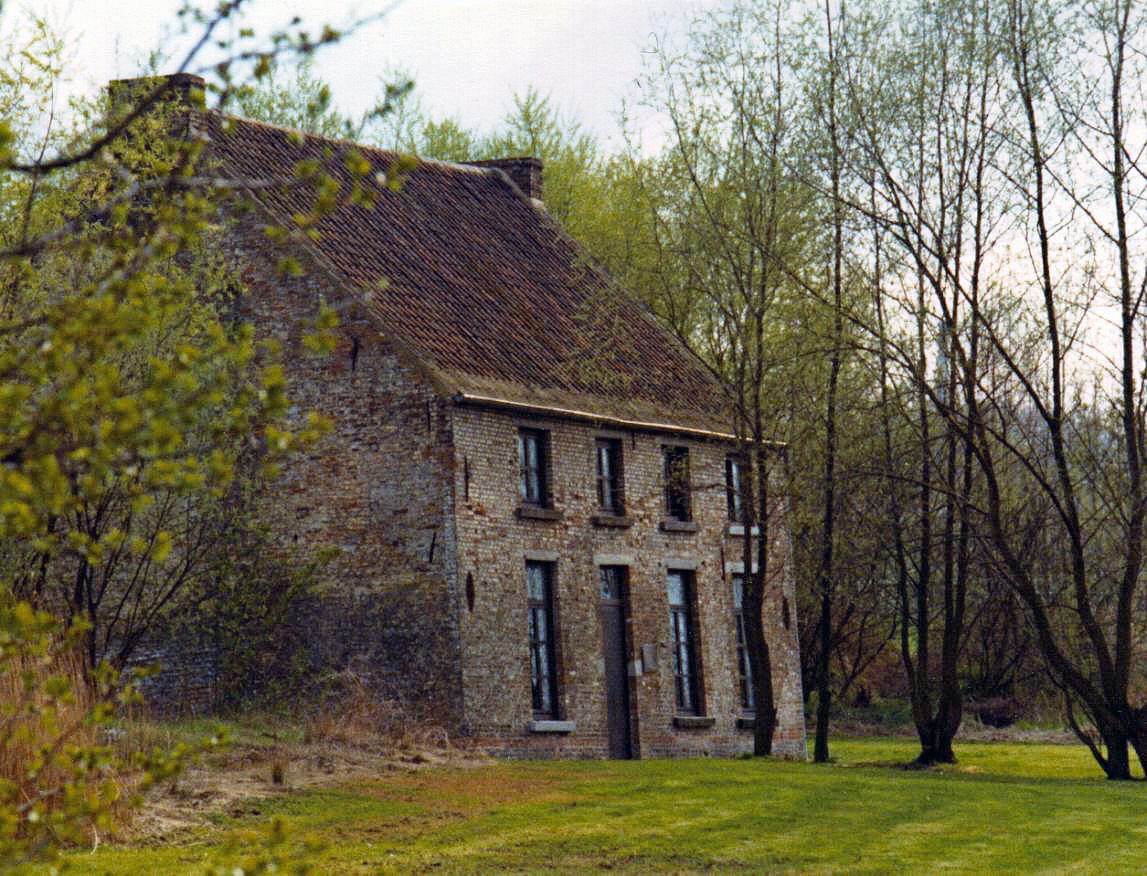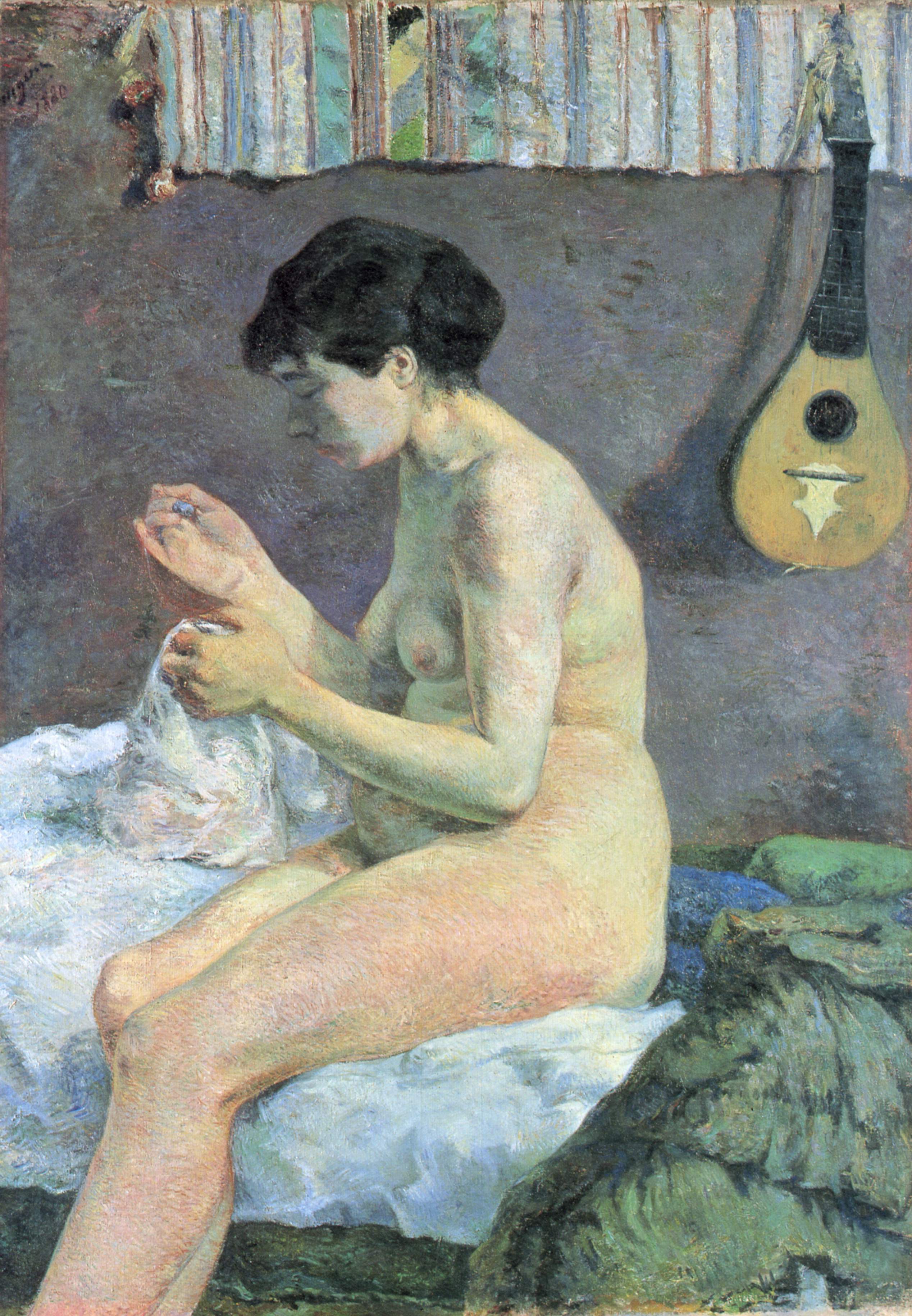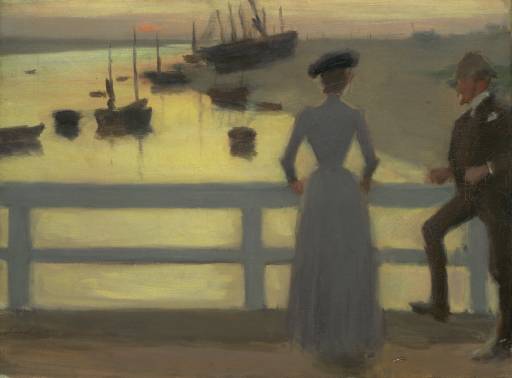|
Edward Wadsworth
Edward Alexander Wadsworth (19 October 1889 – 21 June 1949) was an English artist initially associated with the Vorticism movement. In the First World War he was part of a team involved in the transfer of dazzle camouflage designs to ships for the Royal Navy. After the war his maritime landscapes and still-life compositions using tempera were infused with a surrealistic mood - although he never exhibited with the British surrealists. In the early thirties and in the early forties his work was mainly abstract. He made a significant contribution to the development of modern art in Britain in the inter-war years. Early life and study Edward Wadsworth was born on 19 October 1889 in Cleckheaton, West Yorkshire to Fred and Hannah (née Smith) Wadsworth. His mother died of puerperal sepsis nine days after giving birth. His father was understandably devastated by the loss and found it difficult to relate to the baby. Fred was running the thriving family business – Broomford Mill � ... [...More Info...] [...Related Items...] OR: [Wikipedia] [Google] [Baidu] |
Cleckheaton
Cleckheaton is a town in the metropolitan borough of Kirklees, West Yorkshire, England. Historic counties of England, Historically part of the West Riding of Yorkshire, it is situated south of Bradford, east of Brighouse, west of Batley and south-west of Leeds. It is at the centre of the River Spen, Spen Valley and was the major town in the former borough of Spenborough. Cleckheaton has a history as a mill town and forms part of the Heavy Woollen District. History Early history The Spen Valley was once heavily wooded. Evidence of human habitation in Mesolithic and Neolithic times has been found in the area. Roman remains have been found in the valley and it is thought that roads from York to Chester, and from settlements in Halifax, West Yorkshire, Halifax and Wakefield, passed through Cleckheaton. Cleckheaton was in the ancient parish of Birstall, West Yorkshire, Birstall. A chapel of ease, known as the White Chapel (later Whitechapel) was established. Textile working Th ... [...More Info...] [...Related Items...] OR: [Wikipedia] [Google] [Baidu] |
Slade School Of Art
The UCL Slade School of Fine Art (informally The Slade) is the art school of University College London (UCL) and is based in London, England. It has been ranked as the UK's top art and design educational institution. The school is organised as a department of UCL's Faculty of Arts and Humanities. History The school traces its roots back to 1868 when lawyer and philanthropist Felix Slade (1788–1868) bequeathed funds to establish three Chairs in Fine Art, to be based at Oxford University, Cambridge University and University College London, where six studentships were endowed. Distinguished past teachers include Henry Tonks, Wilson Steer, Randolph Schwabe, William Coldstream, Andrew Forge, Lucian Freud, John Hilliard, Bruce McLean, Alfred Gerrard and Phyllida Barlow. Edward Allington was Professor of Fine Art and Head of Graduate Sculpture until his death in 2017. Two of its most important periods were immediately before, and immediately after, the turn of the twentieth ... [...More Info...] [...Related Items...] OR: [Wikipedia] [Google] [Baidu] |
Van Gogh
Vincent Willem van Gogh (; 30 March 185329 July 1890) was a Dutch Post-Impressionist painter who is among the most famous and influential figures in the history of Western art. In just over a decade, he created approximately 2,100 artworks, including around 860 oil paintings, most of them in the last two years of his life. His oeuvre includes landscapes, still lifes, portraits, and self-portraits, most of which are characterised by bold colours and dramatic brushwork that contributed to the rise of expressionism in modern art. Van Gogh's work was only beginning to gain critical attention before he died from a self-inflicted gunshot at age 37. During his lifetime, only one of Van Gogh's paintings, '' The Red Vineyard'', was sold. Born into an upper-middle-class family, Van Gogh drew as a child and was serious, quiet and thoughtful, but showed signs of mental instability. As a young man, he worked as an art dealer, often travelling, but became depressed after he was ... [...More Info...] [...Related Items...] OR: [Wikipedia] [Google] [Baidu] |
Gauguin
Eugène Henri Paul Gauguin (; ; 7 June 1848 – 8 May 1903) was a French painter, sculptor, printmaker, ceramist, and writer, whose work has been primarily associated with the Post-Impressionist and Symbolist movements. He was also an influential practitioner of wood engraving and woodcuts as art forms. While only moderately successful during his life, Gauguin has since been recognized for his experimental use of color and Synthetist style that were distinct from Impressionism. Gauguin was born in Paris in 1848, amidst the tumult of Europe's revolutionary year. In 1850, Gauguin's family settled in Peru, where he experienced a privileged childhood that left a lasting impression on him. Later, financial struggles led them back to France, where Gauguin received formal education. Initially working as a stockbroker, Gauguin started painting in his spare time, his interest in art kindled by visits to galleries and exhibitions. The financial crisis of 1882 significantly impa ... [...More Info...] [...Related Items...] OR: [Wikipedia] [Google] [Baidu] |
Roger Fry
Roger Eliot Fry (14 December 1866 – 9 September 1934) was an English painter and art critic, critic, and a member of the Bloomsbury Group. Establishing his reputation as a scholar of the Old Masters, he became an advocate of more recent developments in French painting, to which he gave the name Post-Impressionism. He was an early figure to raise public awareness of modern art in Britain, and he emphasised the Formalism (art), formal properties of paintings over the "associated ideas" conjured in the viewer by their representational content. He was described by the art historian Kenneth Clark as "incomparably the greatest influence on taste since John Ruskin, Ruskin ... In so far as taste can be changed by one man, it was changed by Roger Fry". The taste Fry influenced was primarily that of the English speaking world, Anglophone world, and his success lay largely in alerting an educated public to a compelling version of recent artistic developments of the Parisian ava ... [...More Info...] [...Related Items...] OR: [Wikipedia] [Google] [Baidu] |
New English Art Club
The New English Art Club (NEAC) is a society for contemporary artists that was founded in London, England, in 1886 as an alternative venue to the Royal Academy. The NEAC holds an annual exhibition of paintings and drawings at the Mall Galleries in London, exhibiting works by both members and artists from Britain and abroad whose work has been selected from an annual open submission. History Young English artists returning from studying art in Paris, France, mounted the first exhibition of the New English Art Club in April 1886. Among them were William Laidlay, Thomas Cooper Gotch, Frank Bramley, John Singer Sargent, Philip Wilson Steer, George Clausen and Stanhope Forbes. Another founding member was G. P. Jacomb-Hood. An early name suggested for the group was the "Society of Anglo-French Painters", which gives some indication of their origins. As a note in the catalogue to their first exhibition explained, "This Club consists of 50 Members, who are more or less united in ... [...More Info...] [...Related Items...] OR: [Wikipedia] [Google] [Baidu] |
Philip Wilson Steer
Philip Wilson Steer (28 December 1860 – 18 March 1942) was a British painter of landscapes, seascapes plus portraits and figure studies. He was also an influential art teacher. His sea and landscape paintings made him a leading figure in the Impressionist movement in Britain but in time he turned to a more traditional English style, clearly influenced by both John Constable and J. M. W. Turner, and spent more time painting in the countryside rather than on the coast. As a painting tutor at the Slade School of Art for many years he influenced generations of young artists. Life and work Steer was born in Birkenhead, Cheshire, the son of a portrait painter and art teacher, Philip Steer (1810–1871) and his wife, Emma Harrison (1816–1898). When Steer was three years old the family moved to Whitchurch near Monmouth from where, after a period of home schooling, he attended the Hereford Cathedral School. After finding the examinations of the British Civil Service too dem ... [...More Info...] [...Related Items...] OR: [Wikipedia] [Google] [Baidu] |
Henry Tonks
Henry Tonks, Fellow of the Royal College of Surgeons, FRCS (9 April 1862 – 8 January 1937) was a British surgeon and later draughtsman and painter of figure subjects, chiefly interiors, and a Caricature, caricaturist. He became an influential art teacher. He was one of the first British artists to be influenced by the French Impressionists; he exhibited with the New English Art Club, and was an associate of many of the more progressive artists of late Victorian Britain, including James McNeill Whistler, Walter Sickert, John Singer Sargent and George Clausen. Early life and career as a surgeon Tonks was born in Solihull. His family owned a brass foundry in Birmingham. He was educated briefly at Bloxham School, followed by Clifton College in Bristol, and then studied medicine at the Royal Sussex County Hospital in Brighton (1882–85) and the London Hospital in Whitechapel (1885–88). He became a house surgeon at the London Hospital in 1886, under Sir Sir Frederick Treves, 1s ... [...More Info...] [...Related Items...] OR: [Wikipedia] [Google] [Baidu] |
Dora Carrington
Dora de Houghton Carrington (29 March 1893 – 11 March 1932), known generally as Carrington, was an English painter and decorative artist, remembered in part for her association with members of the Bloomsbury Group, especially the writer Lytton Strachey. From her time as an art student, she was known simply by her surname as she considered ''Dora'' to be "vulgar and sentimental". She was not well known as a painter during her lifetime, as she rarely exhibited and did not sign her work. She worked for a while at the Omega Workshops, and for the Hogarth Press, designing woodcuts. Early life Carrington was born in Hereford, England, to railway engineer Samuel Carrington, who worked for the East India Company, and Charlotte (née Houghton). They had married in 1888 and had five children together of whom Dora was their fourth. She attended the all-girls' Bedford High School (Bedfordshire), Bedford High School which emphasized art, and her parents paid for her to receive extra lesso ... [...More Info...] [...Related Items...] OR: [Wikipedia] [Google] [Baidu] |
William Roberts (painter)
William Patrick Roberts (5 June 1895 – 20 January 1980) was a British artist. In the years before the First World War Roberts was a pioneer, among English artists, in his use of abstract images. In later years he described his approach as that of an "English Cubist". In the First World War he served as a gunner on the Western Front, and in 1918 became an official war artist. Roberts's first one-man show was at the Chenil Gallery in London in 1923, and a number of his paintings from the twenties were purchased by the Contemporary Art Society for provincial galleries in the UK. In the 1930s it could be argued that Roberts was artistically at the top of his game; but, although his work was exhibited regularly in London and, increasingly, internationally, he always struggled financially. This situation became worse during the Second World War – although Roberts did carry out some commissions as a war artist. Roberts is probably best remembered for the large, complex and co ... [...More Info...] [...Related Items...] OR: [Wikipedia] [Google] [Baidu] |
CRW Nevinson
Christopher Richard Wynne Nevinson (13 August 1889 – 7 October 1946) was an English figure and landscape painter, etcher and lithographer, who was one of the most famous war artists of World War I. He is often referred to by his initials C. R. W. Nevinson, and was also known as Richard. Nevinson studied at the Slade School of Art under Henry Tonks and alongside Stanley Spencer and Mark Gertler. When he left the Slade, Nevinson befriended Marinetti, the leader of the Italian Futurists, and the radical writer and artist Wyndham Lewis, who founded the short-lived Rebel Art Centre. However, Nevinson fell out with Lewis and the other 'rebel' artists when he attached their names to the Futurist movement. Lewis immediately founded the Vorticists, an avant garde group of artists and writers from which Nevinson was excluded. At the outbreak of World War I, Nevinson joined the Friends' Ambulance Unit and was deeply disturbed by his work tending wounded French and British soldi ... [...More Info...] [...Related Items...] OR: [Wikipedia] [Google] [Baidu] |









